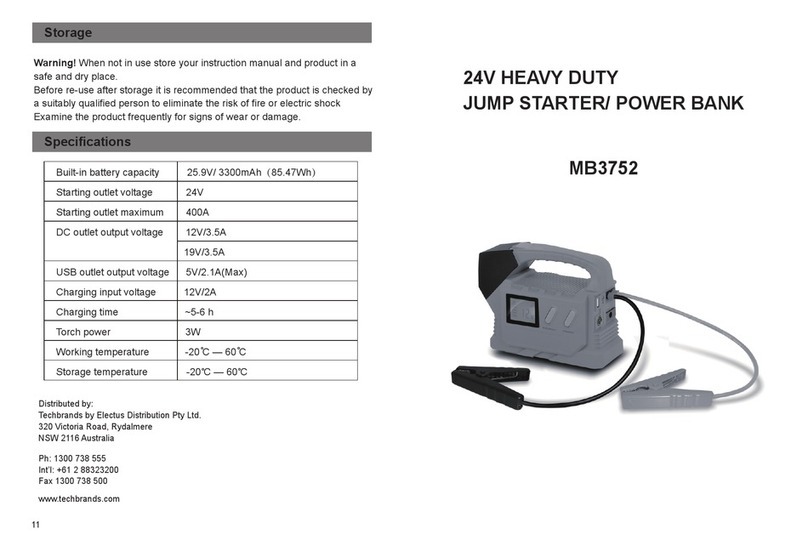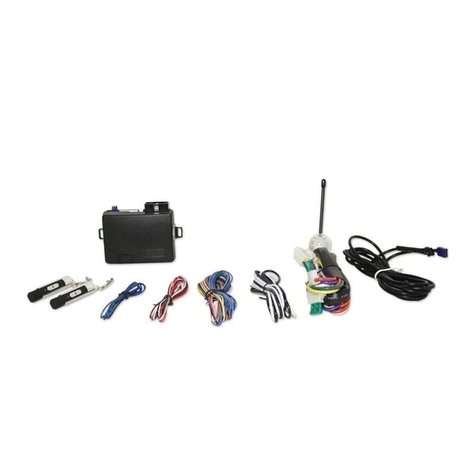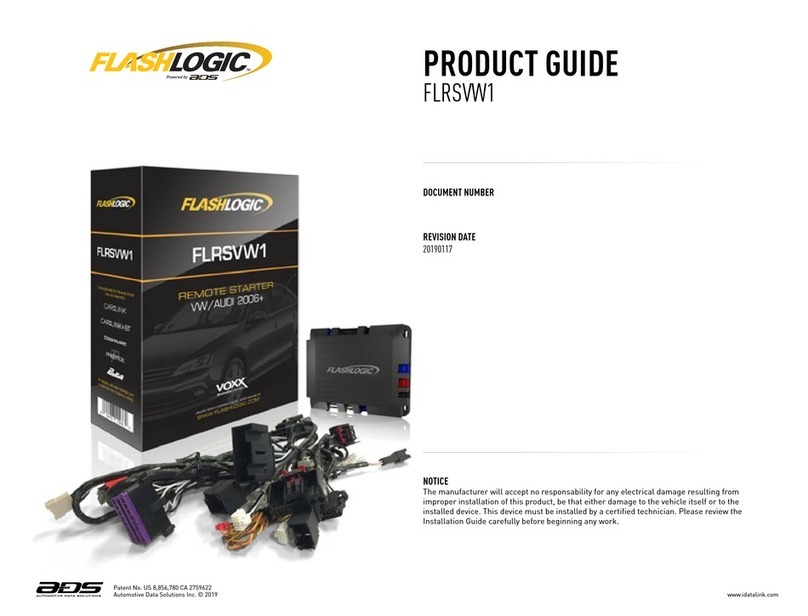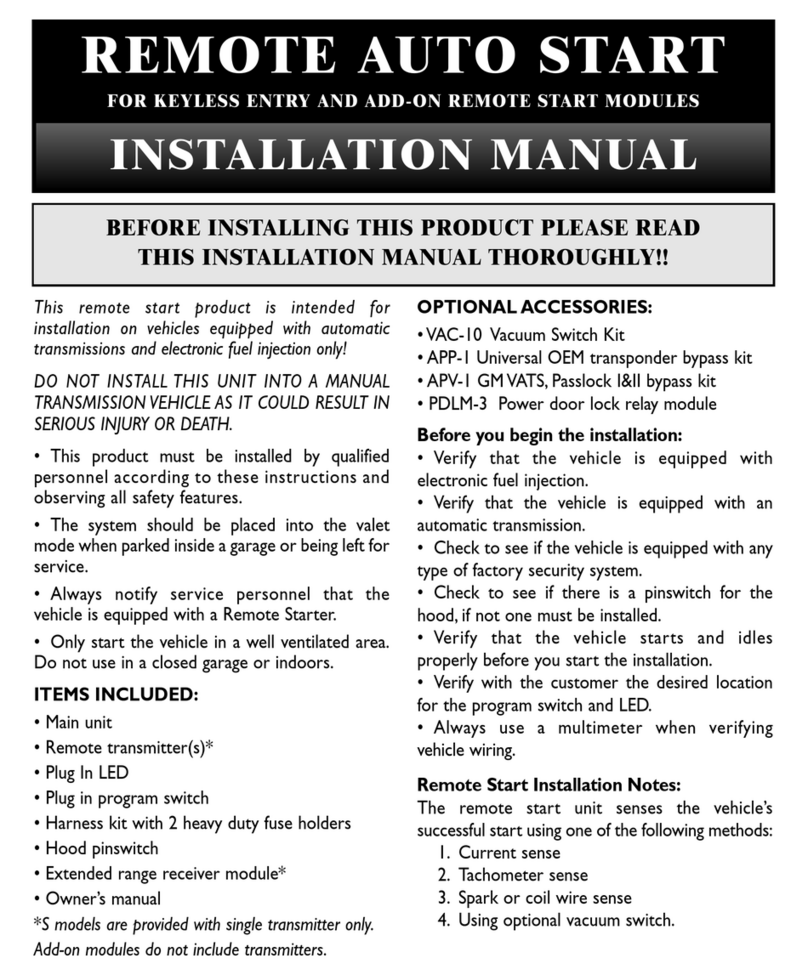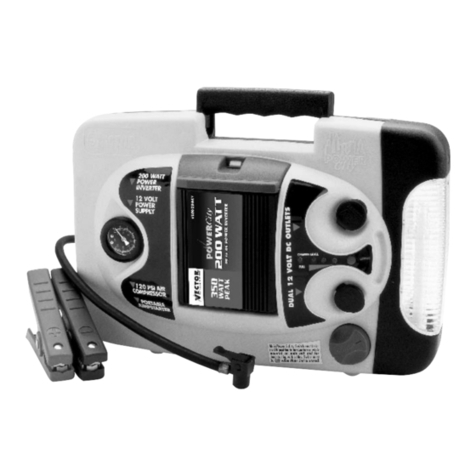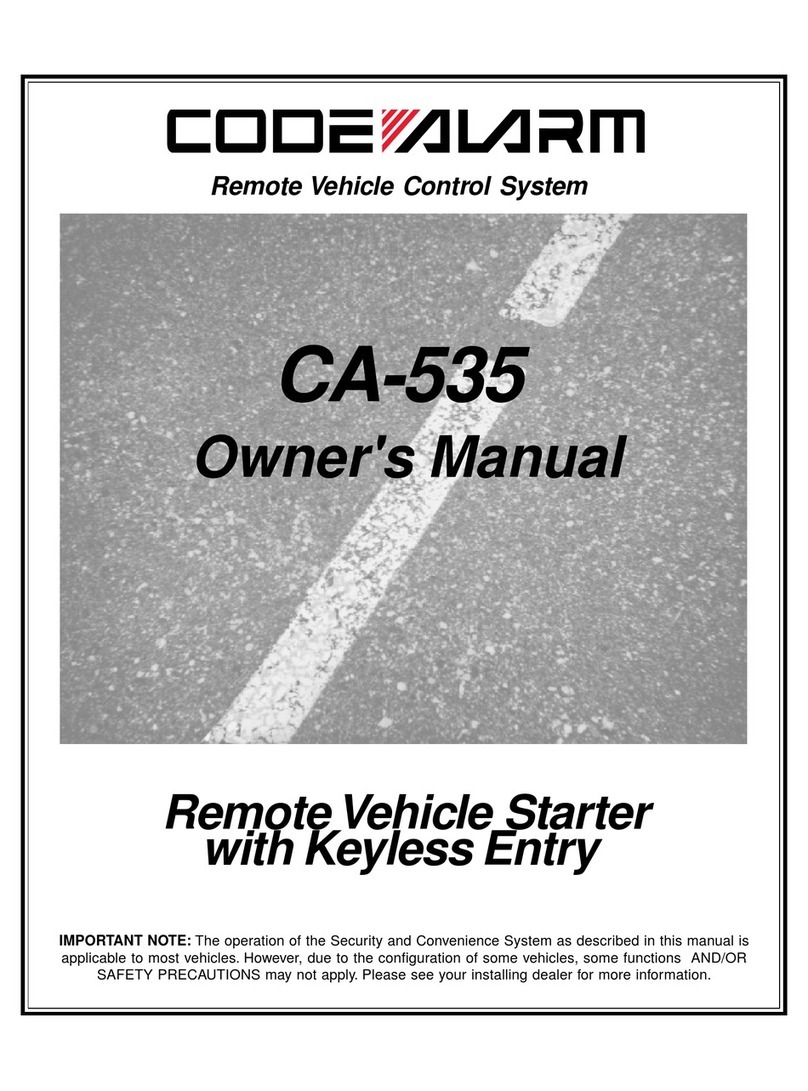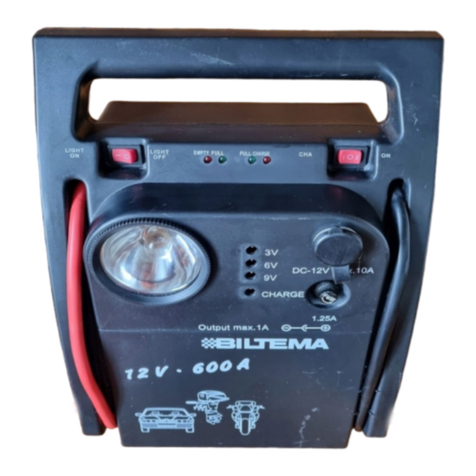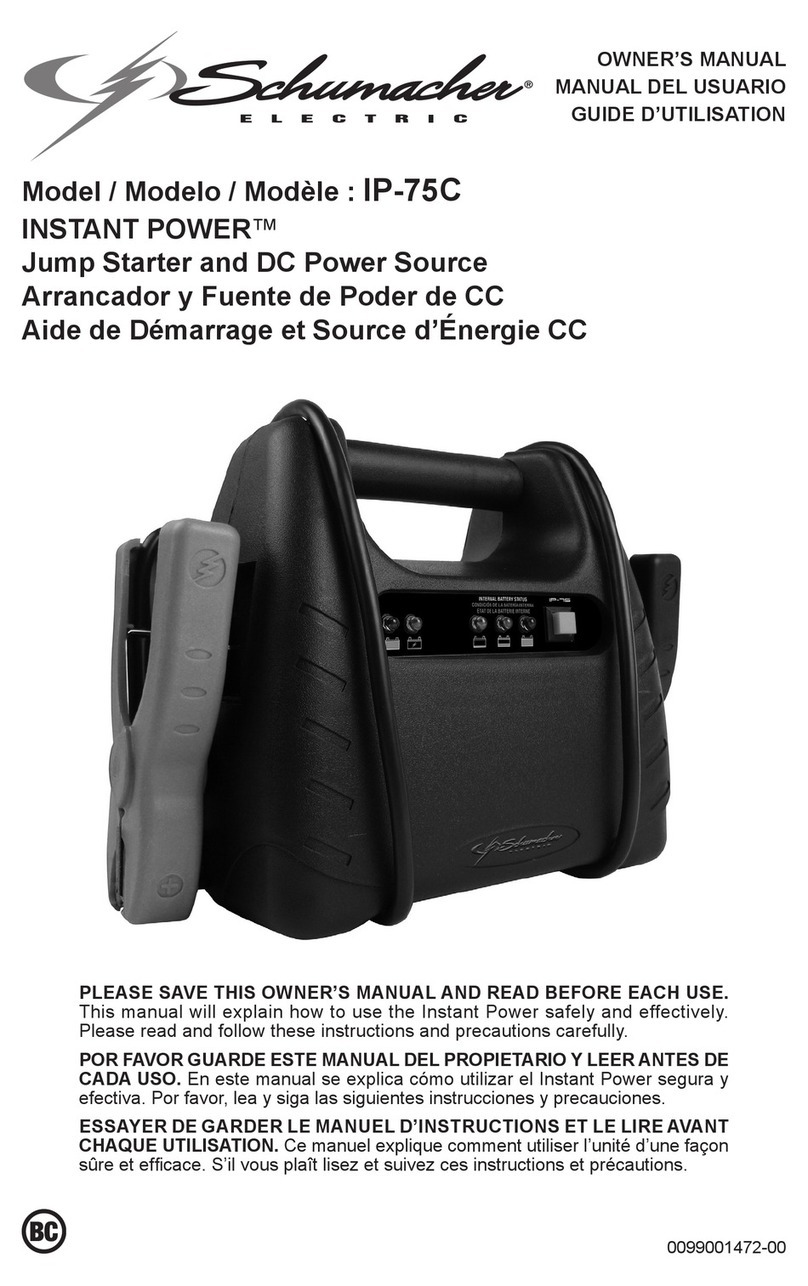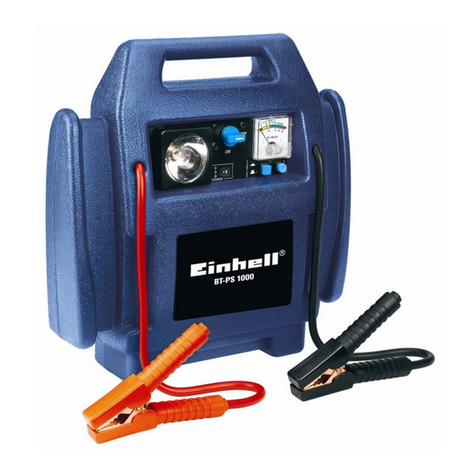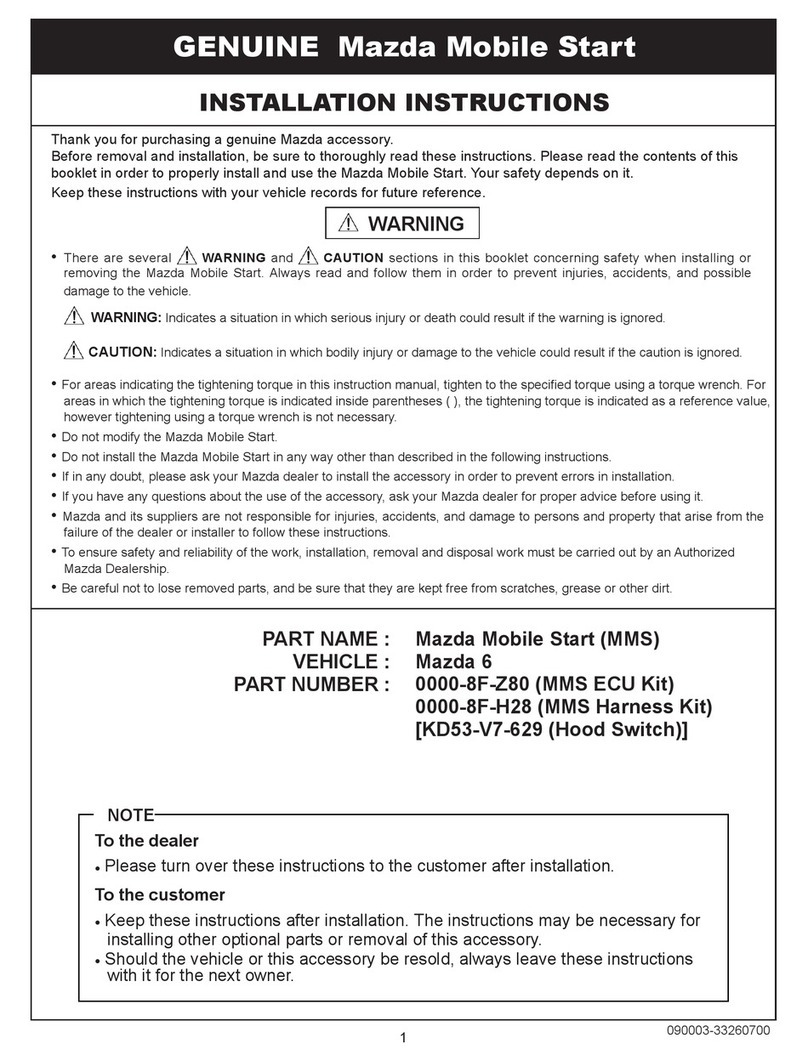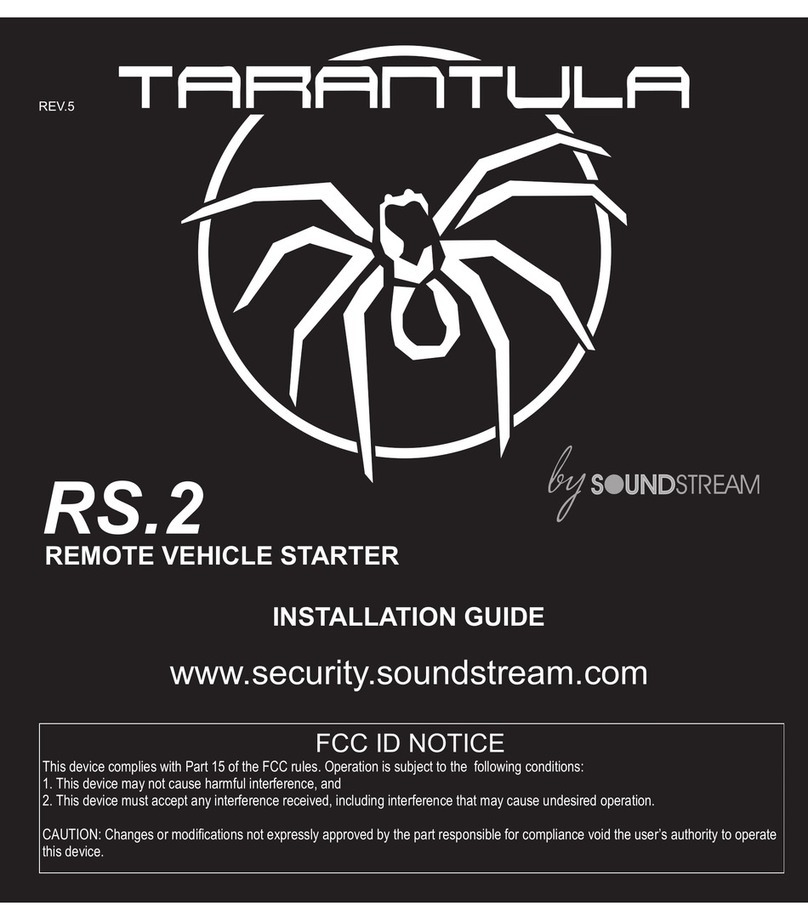
INTRODUCTION
The contents of this product include everything needed to replace the function of a
keyed ignition switch with a simple push button. From entry-level vehicles to high-end
exotics, this same push button feature can be found on many of today’s newer cars. By
carefully working your way through this instruction manual, you will be able to retro fit
your classic or modern vehicle with some of today’s new vehicle technology.
The Phantom Key module completely eliminates your vehicles ignition switch and
allows the operator of the vehicle to operate the ON and START functions with the
simple push of a button.
The key fob communicates with the Phantom Key module as you approach or walk
away from the vehicle. RFID technology allows the push button ignition switch to
operate only for the owner/user of the vehicle. Simply carry one of the key fob IDs with
you, as you come into proximity of the vehicle with the Phantom Key installed, the
module verifies your ID, and becomes active allowing the push button to work. This
proximity is about 10 feet. In the same sense, when the key fob ID moves out of the
proximity of the vehicle the module becomes inactive, and the push button does not
operate. See the “PROGRAMMABLE MODES” portion of this manual for details on
automatic and manual modes of identification from the key fob.
Each key fob ID is unique so a key fob from another Phantom key system will not
work with the module found in your Phantom key kit unless it is programmed to your
module. See the “PROGRAMMABLE MODES”portion on this manual for details. This
assures you, the end user, that the security of your vehicle with the Phantom key
system installed cannot be compromised. However, a single key fob can be
programmed to multiple vehicles allowing someone to operate their car, truck, boat, RV,
etc all with one key fob if each vehicle has a Phantom key module installed.
This install manual is broken down into sections:
Introduction - provide simple clarification of the Phantom Key Product
Contents of the Painless Kit –lists parts your Phantom Key Kit supplies
Tools Needed - lists all things required to properly install the Phantom Key
Pre-Installation Guidelines –contains precautions to take into account before
installation beings and basic install information
Installation- walks you through installing the complete system step by step
Key Fob Modes & Information- outlines the 2 different ways the key fobs
communicate and specifics of the key fobs
Testing- details the proper test sequence of a new install
Programmable Modes –walks you through the customizable features of the
Phantom Key, programming new key fobs, and the Emergency function
To avoid possible mistakes and damage to the module, follows these instructions
from one page to the next and do not skip around. There are some steps that must be
completed before others.
